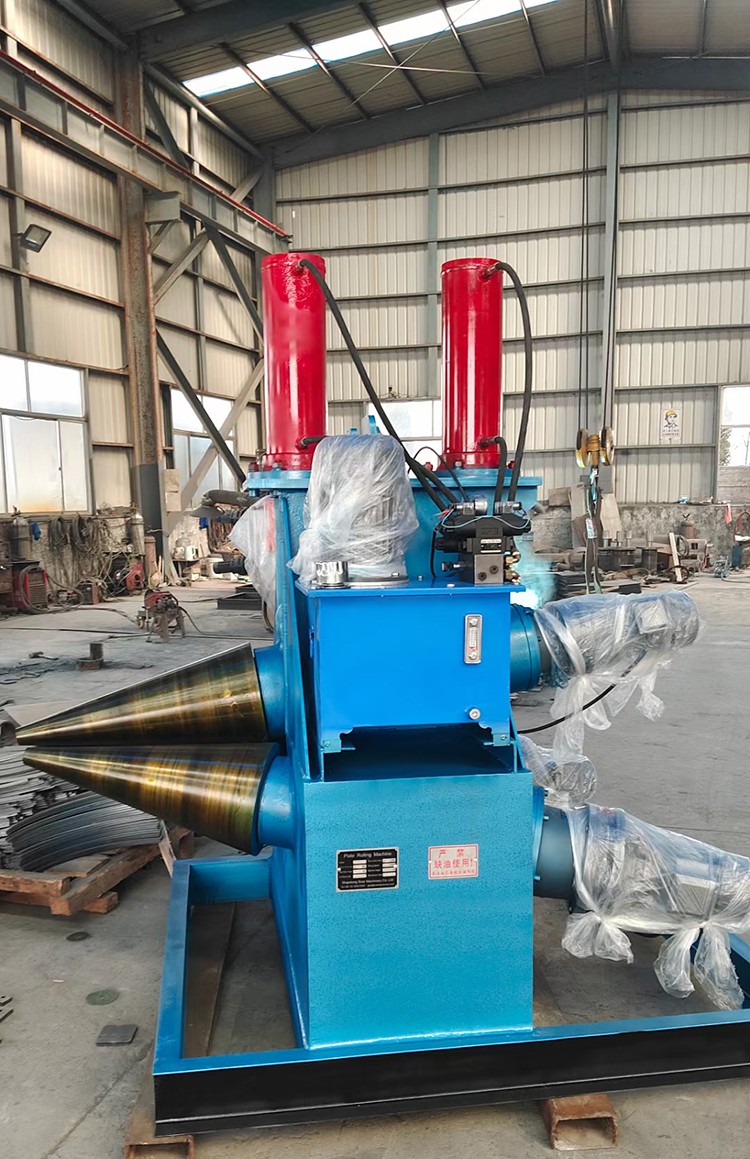

We are a professional cone rolling machine manufacturer with over 10 years of industry experience. Today, we would like to introduce the key factors that affect cone forming errors:

A cone rolling machine is a mechanical device used to roll metal sheets into conical workpieces, widely applied in industries such as petrochemicals, wind turbine towers, and pressure vessels. The precision of conical forming directly impacts the assembly performance and service life of the workpiece, making it crucial to control forming errors. The processing errors of a cone rolling machine are influenced by various factors, primarily including the mechanical structure of the equipment, material properties, process parameters, and operator skill level.
1. The impact of equipment mechanical structure
The mechanical structure of the cone rolling machine is a fundamental factor affecting the precision of conical forming. Insufficient rigidity of the equipment can lead to elastic deformation during processing. In particular, if the supporting structure of the upper and lower rollers lacks sufficient stiffness, deflection may occur under high plate pressure, resulting in non-straight generatrices of the rolled cone, causing ovalization or localized depressions. Additionally, if the parallelism of the roller shafts is not properly calibrated, uneven force distribution will occur during plate feeding, leading to wall thickness variations or cone angle deviations in the final product.
The precision of the transmission system is equally critical. If there is clearance or response lag in the gear or hydraulic system, it will cause the rollers to move out of sync, resulting in skewing or wrinkling of the sheet metal during the rolling process. Therefore, regular maintenance of the equipment, checking the parallelism of the rollers, and ensuring the stability of the transmission system are necessary measures to reduce forming errors.
2. Influence of Material Properties
The mechanical properties of metal sheets directly affect the quality of cone forming. The yield strength and elongation of the material determine its behavior during plastic deformation. If the sheet has high hardness but insufficient ductility, it is prone to springback during bending, resulting in the actual curvature of the cone deviating from the theoretical design. Additionally, the uniformity of sheet thickness is crucial; if there are thickness deviations, the deformation resistance between thin and thick areas during rolling may vary, potentially causing localized over-deformation or under-deformation of the cone.
The initial state of the sheet metal must also be taken into consideration. If the incoming material has internal stress or an uneven surface, rolling may exacerbate shape errors. Therefore, the material should be inspected before processing, and residual stress should be eliminated through annealing treatment when necessary to improve forming accuracy.
3. Setting of process parameters
The process parameters of a roll forming machine include roll pressure, feed speed, bending radius, etc. The proper matching of these parameters is critical to forming accuracy. If the roll pressure is too high, it may cause excessive stretching of the sheet material, resulting in thinner cone walls or even cracking; if the pressure is too low, it may fail to achieve sufficient plastic deformation, leading to increased springback. Excessively high feed speed may cause sheet metal slippage or wrinkling, while excessively low feed speed reduces efficiency and may affect material properties due to localized overheating.
The bending radius must be adjusted according to the cone design dimensions and material properties. If the radius is too small, cracks are likely to form on the outer side of the sheet; if the radius is too large, it will be difficult to achieve the target taper. Typically, the optimal parameter combination must be determined through testing or simulation calculations, and stability must be maintained during mass production.
4. Operator skill level and external environment
The experience of operators has a significant impact on forming error control. Skilled operators can adjust parameters in a timely manner based on equipment status and material feedback, such as fine-tuning the roller spacing to compensate for sheet deviation or applying segmented pressure to reduce springback. Additionally, the alignment of workpieces and real-time monitoring during the rolling process rely on the operator's judgment.
Environmental factors such as temperature changes can also affect processing accuracy. The thermal expansion and contraction properties of metal materials can cause dimensional fluctuations, especially in environments with large temperature differences. Temperature compensation or maintaining constant workshop temperatures must be considered in such cases.
The forming errors in the production of conical parts by a cone rolling machine result from the combined influence of multiple factors. To enhance precision, it is essential to ensure the mechanical stability of the equipment, select materials that meet the required specifications, optimize process parameters, and strictly adhere to operational standards. In actual production, a systematic quality control process should be established, encompassing regular equipment calibration, material pre-treatment, process testing, and final product inspection, thereby effectively minimizing errors and meeting the performance requirements of the workpieces.
If you are interested in the cone rolling machine, please contact us.
 Address:Room 1202, Detaitang Building, No. 118 Huaguang Road, Zhangdian District, Zibo, Shandong
Address:Room 1202, Detaitang Building, No. 118 Huaguang Road, Zhangdian District, Zibo, Shandong WhatsApp:+8615653328535
WhatsApp:+8615653328535 Wechat: +8615965331535
Wechat: +8615965331535  E-mail:zs@sdsmachinery.com
E-mail:zs@sdsmachinery.com